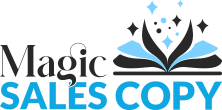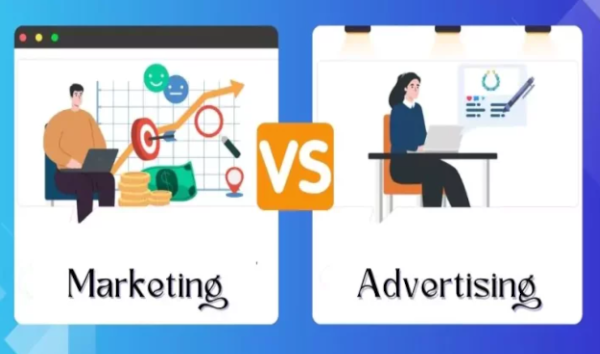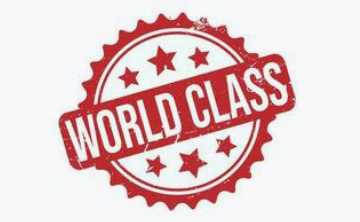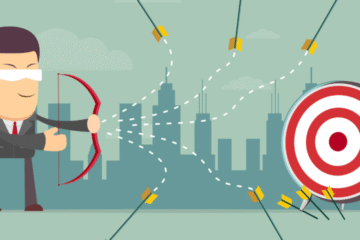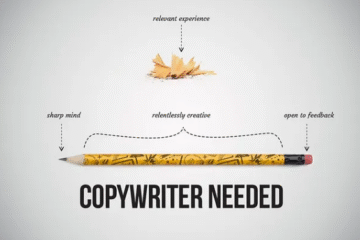Let’s start with a blunt truth: most companies use “advertising” and “marketing” like synonyms—and then wonder why their campaigns stall. They’re not the same thing. Confuse them, and you pour budget into noise. Get the difference right, and everything sharpens: strategy, message, media, ROI.
Below is the clean, money-on-the-line distinction—explained simply, with examples you can use today.
The 10-Second Difference
Marketing is the money-making system: choosing the right market, crafting the offer, setting price and positioning, designing the funnel, and engineering how strangers become buyers and buyers become repeat buyers.
Advertising is one lever inside that system: paid media that announces your message to a targeted audience and drives them to take the next step.
Think of marketing as the engine. Advertising is the accelerator. Step on the gas with a broken engine and you don’t go far.
What Marketing Actually Does (and Why It Comes First)
Great marketing answers seven profit questions before a single ad runs:
Who is the economic buyer? Demographics, psychographics, pains, desires, buying triggers.
What is the offer? Core product + bonuses + guarantee + risk reversal + urgency.
Why you? Positioning and proof: unique mechanism, case studies, reviews, authority assets.
Where will the sale happen? Landing page, phone call, demo, retail, webinar, email sequence.
How will you follow up? Lead magnets, nurture emails, retargeting, sales calendar.
What will you measure? CAC, LTV, AOV, CVR, payback period, MER.
How will you scale? Margins, upsells, cross-sells, channel expansion, creative iteration.
If marketing doesn’t answer these, advertising is reduced to “spray and pray.”
What Advertising Does (When It’s Built on Real Marketing)
Advertising translates your strategy into paid attention:
Message: the Big Idea + headline + hook.
Media: where the ad runs (search, social, display, TV, radio, print, sponsorships).
Match: congruence between audience, promise, and next step.
Measurement: impressions → clicks → leads → sales → profit. Fast feedback loops.
When the underlying marketing is tight, ads don’t feel pushy. They feel obvious. Natural. Like you showed up exactly where your buyer hangs out with exactly what they were ready to hear.
Common Confusions That Kill ROI
“We need more traffic.”
You probably need a stronger offer and clearer positioning. Traffic multiplies what already exists. If your message is muddy, ads just multiply the mud.
“We tried ads; our industry doesn’t respond.”
Translation: you ran media before you nailed the message-market fit. Industries don’t buy. People with problems do.
“Brand vs. direct response.”
False dichotomy. Brand is the memory of promises kept. Direct response is how you acquire customers and prove those promises. Good marketing uses both.
“Creative fatigue is killing our CPA.”
Maybe. But creative fatigue often masks offer fatigue. Ads wear out fast when the offer is weak or indistinguishable.
“We just need a better media buyer.”
Maybe. But even world-class buyers can’t save a confused funnel or a ho-hum value prop.
Quick Litmus Tests: Are You Doing Marketing or Just Advertising?
If you can’t articulate your offer in one sentence (“We help [who] get [result] without [pain] in [timeframe] because [unique mechanism]”), you’re advertising without marketing.
If you don’t know your LTV and payback window, you’re advertising blind.
If your best proof is still a vibe, you’re not ready to scale spend.
Two Simple Examples
Local Plumber
Marketing: Choose “emergency homeowners within 10 miles.” Offer “30-minute arrival or $50 off,” transparent pricing, photo-ID techs, text-alert ETA, 1-year guarantee, aftercare email with maintenance tips. Funnel: click-to-call + responsive landing page + review request + referral coupon.
Advertising: Google Local Services, search ads on “burst pipe near me,” Facebook retargeting to website visitors, direct mail to older neighborhoods with aging pipes.
Supplement Brand
Marketing: Avatar: 45–65, joint pain, values natural solutions. Offer: 3-bottle bundle + free mobility guide + 90-day empty-bottle guarantee. Unique mechanism: clinically dosed actives, not fairy-dusted. Funnel: advertorial → quiz → sales page → order bump → email upsell to subscription.
Advertising: Native ads with mobility hooks, YouTube pre-roll featuring a mobility test, newsletter sponsorships in health lists, retargeting with customer stories.
Notice: the ads are obvious once the marketing is done.
The Money Math (So You Never Argue with Opinions)
AOV (Average Order Value): What’s the first-transaction revenue?
CAC (Customer Acquisition Cost): What can you afford to spend to get a customer?
LTV (Lifetime Value): What will this buyer be worth in 3, 6, 12 months?
Payback Period: How quickly do you earn back ad spend? (30, 60, 90 days)
Allowable CPA = (AOV × gross margin) − target profit on day 0
If your allowable CPA is $48 and your media is bringing customers in at $65, you don’t have an ad problem—you have a marketing problem (offer, price, margins, upsells, LTV).
A Simple Framework You Can Use This Week
Clarify the Buyer & Pain
One page. Name, day-in-the-life, top 3 pains, top 3 desires, beliefs blocking purchase.
Build the Offer
Core product, 2–3 bonuses, guarantee, urgency (limited slots, schedule cutoff, seasonal demand), risk reversal.
Craft the Message
Big Idea, headline, promise, proof (specific, quantified, visual), CTA.
Design the Path
Where do they land? What’s the one next step? What’s the follow-up? (Email cadence, retargeting creative, sales touch.)
Set the Numbers
Targets for CTR, CPL/CPA, CVR, AOV, LTV, payback. Decide what “good” means before you spend.
Only Then Buy Media
Start narrow. Test 3–5 angles. Kill losers fast, iterate winners deeper.
When to Spend on Advertising (and When to Hold Your Fire)
Spend now if you have a clear avatar, differentiated offer, proof assets, and a funnel ready to convert cold traffic.
Hold if you’re still guessing at the buyer, your “offer” is a product description, or your best testimonial is your mom.
Paid ads amplify reality. Make sure the reality is worth amplifying.
Bottom Line
Marketing is strategy, offer, and system. Advertising is the paid megaphone.
Do the marketing right and ads become a force multiplier. Skip the marketing and ads become a slot machine.
If you want help tightening the offer, sharpening the message, and mapping the funnel (before you pour more fuel on the fire), say the word.
